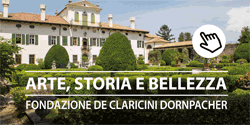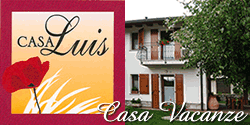Home / News /National Archaeological Museum
National Archaeological Museum
Founded by the Conte Michele della Torre Valsassina in 1817, it was placed in the Palace belonged to the noble family of Nordis. From the 2nd of June 1990 the Museum has been transferred to the palace of the Provveditori Veneti built in the oriental side of the Dome square. Andrea Palladio planned the Palace and the realization was made in the years between 1581 and 1596, as it is written in the front side of the Palace by the Provveditore Sebastiano Querini. The Museum has been opened in occasion of the great Exhibition of the Longobardi that includes the main nucleus of the altomedioevale section and whose widening is still in progress. Currently the museale exposure is articulated in two floors. Palazzo dei Provveditori The ground floor accommodates the lapidary part divided in the following sections: Roman, paleobizantina, altomedioevale and Romanesque
In the stairwell the Cernazai's collection is exposed, it includes some burial registrations in Greek and Latin coming from the Dalmatia. The southern section of the ground floor is divided into three rooms two of them contain fragments of tabernacle, columns, plutei, capital, pilastrini, frames from the VI to the IX century. The last room accommodates the pieces of Romanesque age (XII-XIII sec.) including the bestiario medioevale, with fantastic animals and with pilastrini of the same age. In the inner courtyard of the Palace there are exposed Jewish's tombstones coming from the cemetary of the " stretta giudaica " and coats of arms of different periods. .
The noble floor of the Palace accommodates the Longobarda Exhibition that includes seven rooms. The material is chronologically ordered, showing the handmake of the first takeover longobardo in " Forum Julii ", most of which imported, founded in the old necropoli of S. Giovanni e Cella (VI - VII sec.). Great suggestion gives the room that accommodates the roman sarcofago and the equipment of the c.d. Duca Gisulfo, founded in the 1874 in Paolo Diacono's Square (half of the VII century).
In the last room the last expression of the longobarda's art is represented, already influenced by the Carolingio world (Pace del Duca Orso; two holders of the treasure of the Dome, in silver; Invillino's cross).
For a better understanding of the exhibition a new didactic presentation has been prepared, notice-board are displayed above the windows explaining in a simple way the habits and the customs of the Longobardi and the practical employment of the objects exposed.






